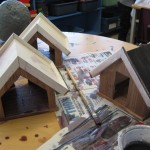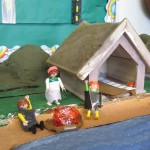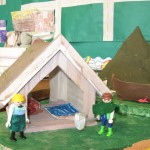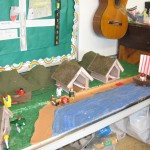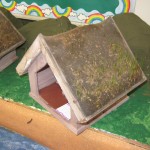Welcome to Division Seven’s Viking village! We used what we’ve been learning about viking communities (clothing, housing, transportation) to build a village.
We were inspired by the viking settlement at L’Anse aux Meadows in Newfoundland which I visited last summer. Mrs. Clark helped make the papier maché mountains, which we then painted, as well as the water. We stained the houses, and I put soil and grass seed on the roofs, since the houses in L’Anse aux Meadows had sod roofs. Lots of students made various other items for the village (fires, beds, weapons) and clothing for the people.
I think our village looks pretty good, especially now that the grass is growing! Click on the photos for a closer look.
